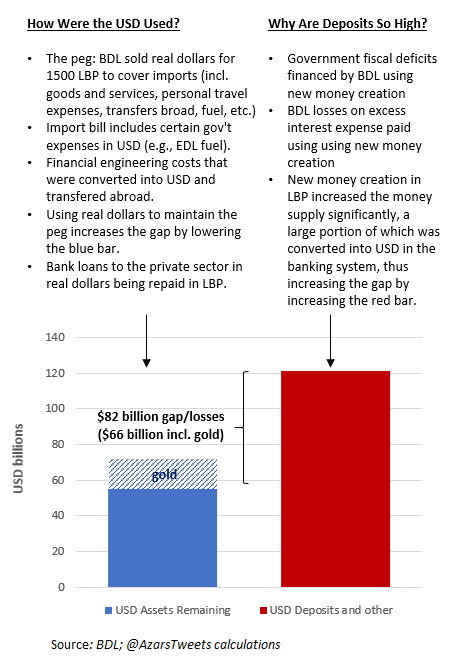
1/ Increasing the withdrawal rate to 8,000+ would increase BDL's unrealized balance sheet losses by hundreds of trillions of LBP. It doesn't matter if there are withdrawal limits. The loss will eventually materialize either as LBP deval or higher discount on bank deposits/checks.
https://twitter.com/IbrahimKanaan/status/1433384097750061057
It's like saying it's OK if I borrow/spend $1 bn loan because it's zero interest in the first year. It's a huge problem. Unrealized losses on the book are a MAIN reason for the LBP deval. Increasing the withdrawal rate increases BDL's debts when it's already facing massive losses
You can't create value out of nothing. Someone always pays. You can't outsmart math. In this case, the ones paying will be a combination of those (individuals or companies) with money still stuck in the bank, those with LBP assets, and those earning LBP income. And the economy.
Restructuring is the only solution.
• • •
Missing some Tweet in this thread? You can try to
force a refresh






